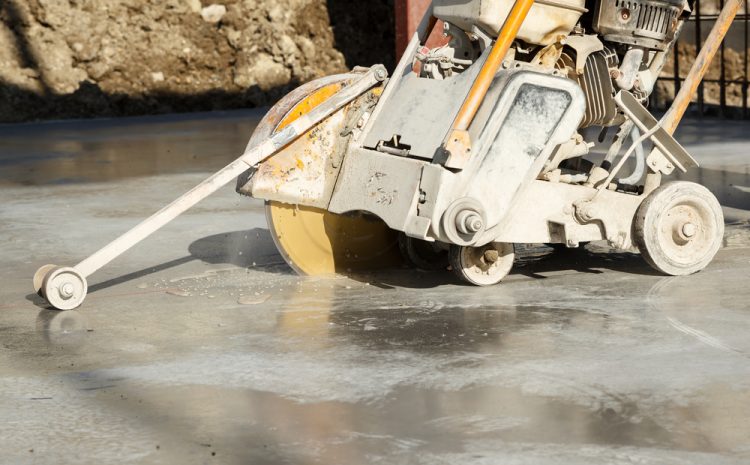
Wet Vs Dry Concrete Cutting: Which Option Is Right For Your Project?
Concrete cutting is a delicate and precise undertaking. For the best outcome, one must use the right equipment and follow the right cutting process. When it comes to making the most precise cuts in concrete, wet and dry cutting are your two main options.
Knowing when and where to use each of these methods is essential in creating a safe job site, managing the impact on the environment and also preserving saws and blades.
To find out which concrete cutting method, between wet and dry cutting, is suited to your project, read on below.
What Is Wet Concrete Cutting?
Wet cutting involves the use of a stream of water to cool the cutting blade; and with it, extend the blade’s lifespan, in addition to removing the harmful concrete dust produced during the cutting operation. Silica dust exposure can lead to a variety of respiratory issues, including lung cancer, when inhaled for extended periods of time.
However, as helpful as wet cutting is, it is also considered to be the messier option. If not done carefully, this method may end up damaging some surfaces like porcelain, and similar forms of decorative patterning.
What Is Dry Concrete Cutting?
Dry concrete cutting is done using diamond blades that come with specialised segment welds. This unique design ensures that the blades can handle cutting without the need for water cooling.
The use of dry-cut blades eliminates any need for a water source on the job site. This cutting method is great for small jobs that do not require a lot of precision.
Since dry cutting produces a lot of harmful concrete dust during the cutting process, you should always wear the necessary protective gear before you start cutting.

Pros And Cons Of Wet Concrete Cutting
Some of the main benefits of wet concrete cutting include:
- For starters, wet cutting blades are designed to ensure the most accurate, precise and clean cuts.
- Wet cutting is faster than dry cutting as you can cut continuously without having to take breaks to allow the blade to cool down.
- Wet cutting has fewer vibrations and less noise, resulting in a quieter job site.
- This concrete cutting method is safer as it produces less silica dust and has lower chances of encountering kickback from the saw as you have more control.
- Since wet cutting blades last longer, this method is considered to be more cost-effective.
Wet cutting also has a number of drawbacks including:
- This concrete cutting method requires a continuous supply of water which might be hard to come by in some areas.
- The lifespan of wet cutting saws is shorter than that of dry cutting saws.
Pros And Cons Of Dry Concrete Cutting
- Dry cutting saws are easier to set up and use – in making straight and shallow cuts.
- Most dry-cutting saws tend to be highly portable and can be used just about anywhere.
- Dry-cutting diamond blades are designed to last longer.
- It is not as messy as wet cutting, even though it leads to the production of a lot of concrete dust.
Some of the main drawbacks of dry cutting include:
- To begin with, dry cutting leads to the production of massive amounts of harmful concrete dust.
- Dry cutting also takes longer as you need to take regular breaks from cutting to allow the blade to cool off.
Final Thoughts: Which Method Is Right For Your Project
If you are planning an upcoming concrete cutting job, you will need to choose wet cutting or dry cutting. The specifics of your project should guide your final decision. If you are looking to make the most precise cuts, choose wet cutting. However, if you have a small job that is not focused on precision, dry cutting will do just fine.
Hire A Professional Concrete Cutting Company In Sydney
If you are looking for a concrete cutting company in Sydney that is trustworthy and reliable, then don’t go past Sydney Sawing & Drilling. Please call us today on (02) 9158 6101 or leave an enquiry.

